There are many cactus species that are native to Mexico, and the Pachycereus Marginatus is one of them. It is often known by its more common name of Mexican Fence Post Cactus.
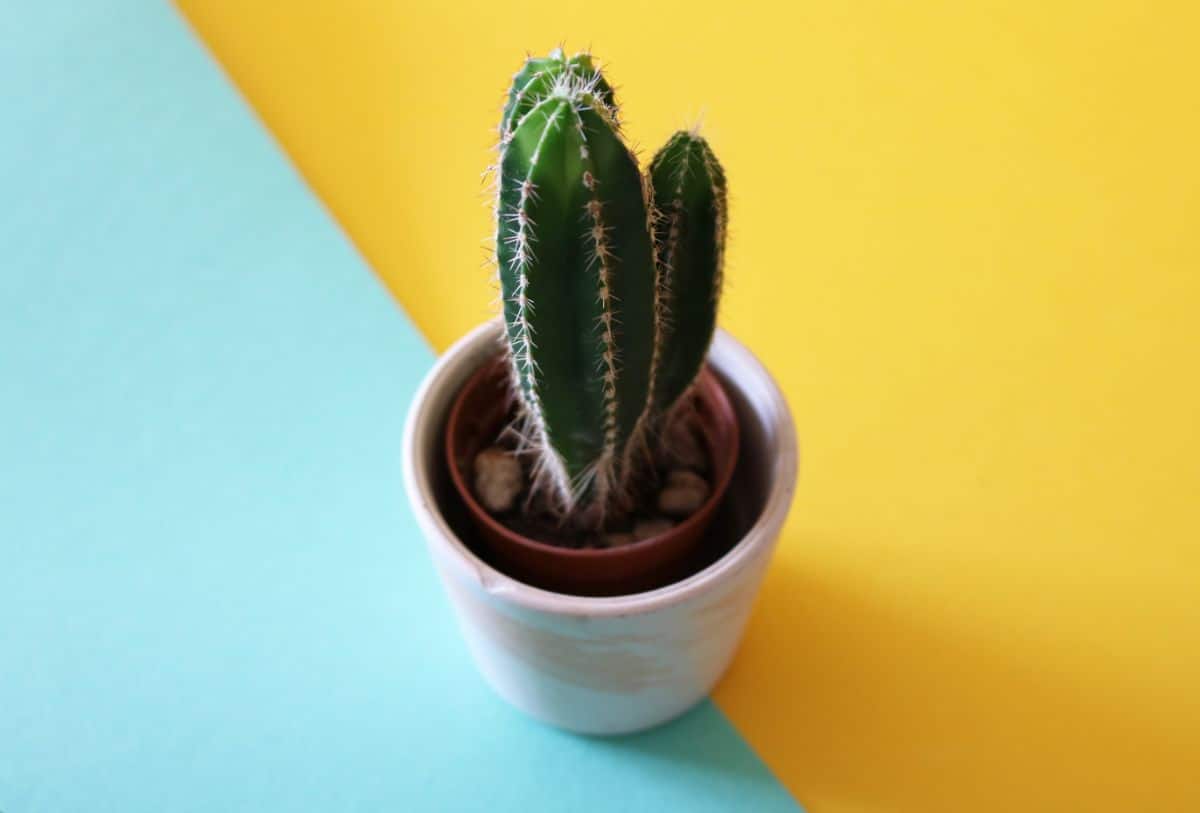
The scientific name Pachycereus Marginatus derives from a combination of Greek and Latin and relates to the appearance of the plant. The name actually conveys a good idea of what this succulent looks like.
It has a tall, thick trunk, which explains why it was given this name. ‘Pachys’ is the Greek for ‘thick’, while ‘cereus’ is Latin, meaning ‘torch’. This cactus has the shape of a long, thick trunk.
The Pachycereus Marginatus is a desert cactus that is very popular as a fence. Its thick, upright trunk makes it ideal as a basis for a fence. It is a popular choice for a live, growing barrier. Hence its common name of Mexican Fence Post Cactus.
Jump to:
- Pachycereus Marginatus appearance
- Caring for the Pachycereus Marginatus
- Light
- Water
- Temperature
- Soil
- Is Fertilizer Necessary?
- Propagating the Pachycereus Marginatus
- Propagating from a cutting
- Propagating from seeds
- How to repot your Pachycereus Marginatus
- Common pests and problems with the Pachycereus Marginatus
- Overwatering
- Insect infestation
Pachycereus Marginatus appearance
| Name: | Pachycereus Marginatus |
| Soil: | Combination of cactus potting soil, and mineral grit |
| Blooming: | Spring |
| Light: | Full and direct sunlight |
| Water: | When the soil is completely dry |
| Propagation: | Stem cuttings and seeds. |
The Pachycereus Marginatus has a typical desert cactus appearance. It is tall and erect, with a thick, strong trunk.
It grows in clumps of plants that tend to be very close together. It has been known to grow as tall as 50 feet when in its native environment, or out in the wild. When cultivated in containers, it can reach a height of approximately 15 feet.
The stems are a dark shade of green. They grow into branches that are between 2 and 8 inches thick. They are strong and upright. Each stem has about 7 ribs, which have a rough, coarse skin.
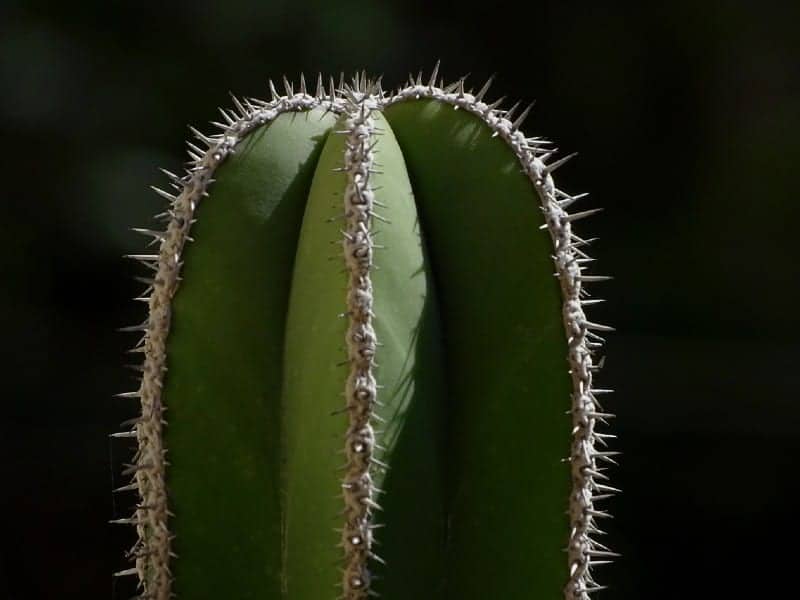
Buy it from:
The ribs are full of white areoles. These are raised areas from which the flowers will eventually emerge. The areoles are covered in prickly, spiny hairs.
The stems have a spine that runs up the center in a straight line and is light brown to yellow in color.
The Pachycereus Marginatus flowers in mid to late spring, producing a delicate, pretty, pinkish-green flower. Each areole will produce 1-2 flowers. The flowers are small, and will only grow to a length of 1.5-2 inches.
Towards the beginning of summer, the Pachycereus Marginatus produces a small, reddish-yellow fruit, approximately 2 inches in diameter. It has small, black seeds.
Caring for the Pachycereus Marginatus
The Pachycereus Marginatus is strong and robust. It is ideal for someone who is just starting out with a hobby of cultivating succulents. It is a very independent, self-sufficient plant. It does not require a high level of care and maintenance from you. Left to its own devices, it will grow and thrive without much human intervention.
Light
All plants need a certain amount of natural sunlight in order to grow and thrive. Succulents, in particular, usually need a lot of direct sunlight. Without direct sunlight, they will eventually wilt and shrivel.
Because the Pachycereus Marginatus is native to areas that have desert conditions, it is used to strong sunlight. It needs full sun to partial shade and should be planted in a position that gets at least 6 hours of direct sunlight per day.
If your Pachycereus Marginatus is in a container indoors, it should be placed in a warm room that gets lots of direct sunlight. If you are in the northern hemisphere, choose a room that is south-facing. This will usually have the most natural light. Your Pachycereus Marginatus will do very well on a window sill there.
If your home does not have a room that gets enough direct sunlight, it is advisable to use a grow light for your Pachycereus Marginatus. This is a special electric light that is designed to mimic natural light, enabling your plants to undergo the process of photosynthesis.
Photosynthesis is an operation whereby plants draw on natural light, to produce chlorophyll. Chlorophyll is essential for the nourishment of the plant. If there is insufficient direct sunlight, the plant will not be able to produce enough chlorophyll to meet its nutritional needs.
No products found.
If you are using a grow light, it is helpful to turn your plant every few days, so that it gets equal exposure to the light from all sides. This will ensure even growth.
Should you decide to move your Pachycereus Marginatus from inside to the outdoors, the transition should be gradual. Start off by taking it outside for only one hour a day for a few days, gradually increasing the time that it is left outdoors.
In this way, your succulent will slowly become acclimatized to the change in environment. If the change is too drastic, the plant may suffer from severe sunburn if it is not used to the intense heat, and it may not survive the trauma of the sudden change.
Water
The Pachycereus Marginatus originally comes from a hot, arid area. Therefore, it is able to withstand extremely dry conditions and is quite drought resistant.
This succulent should only be watered about once a week. It should be given a thorough soaking, allowing the roots to absorb as much water as they need.
The best time of day to water is early in the morning. The excess water can then have enough time to drain away and the plant can dry out. If you water at night, the water will not drain and dry up as quickly, and it will get too cold.
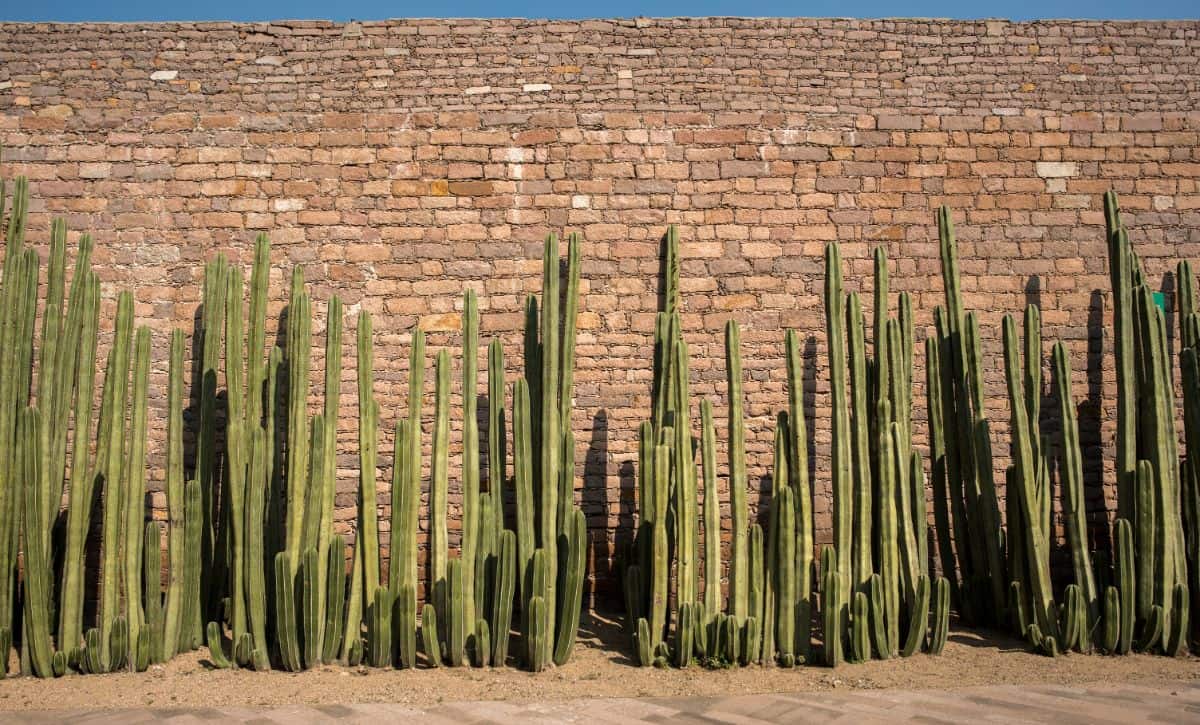
If your succulent is in a container, it is important that the container should have adequate drainage holes at the bottom. In this way, excess water will be able to drain off. If the pot does not have good drainage holes, the roots will be left to sit in constantly damp soil. This may cause them to rot.
After deep watering, the Pachycereus Marginatus should be left to dry out completely before watering again. If you are not sure whether to water, you can test by inserting a wooden skewer or kebab stick into the soil. It should be completely dry when removed.
You can also do a finger test, by inserting your index finger as deep as possible into the soil. If it feels dry to the touch, it is time to water again. If the soil still feels even slightly damp, wait another day or two before checking again.
The Pachycereus Marginatus is generally dormant through the winter months. Very little growth takes place during the dormant period. Therefore the plant does not usually need watering during this time.
Temperature
The Pachycereus Marginatus is a desert plant. Consequently, it is used to very hot conditions. It thrives in regions that constantly have high temperatures.
If you live in an area with a milder climate, your Pachycereus Marginatus can be planted directly into outdoor beds, where it should flourish in the warmth.
The Pachycereus Marginatus is not terribly hardy, and will not be able to survive extreme weather conditions. Very cold temperatures will be too much of a shock and your succulent will not be able to tolerate the cold.
If you live in an area that frequently experiences colder temperatures, it is recommended to plant your Pachycereus Marginatus in containers. In this way, they can be brought indoors when the weather turns cold.
If the temperature drops below 25° Fahrenheit, your Pachycereus Marginatus should be brought indoors. Any conditions below 25° are likely to cause serious damage to your succulent.
If you live in an area that frequently gets a lot of frost in winter, your Pachycereus Marginatus will need to be protected. It will not cope well with exposure to frost. Frost damage occurs when the leaves are covered with ice for a few hours or more. The leaves will start to die off and turn soft and brown. The ice crystals basically cut off the plant’s circulation.
If frost is expected overnight, it is advisable to move the plant undercover to protect it from frost damage. It can also be covered with a light layer of plastic or fabric for protection from frost.
Soil
The pH of the soil is not terribly important for the Pachycereus Marginatus, as long as it is not too extreme. The most important aspect to consider is that the soil should have excellent drainage.
The soil should be made up of a combination of cactus potting soil, and mineral grit, with about 30% cactus soil to 70% mineral grit. This will ensure that the soil has good enough drainage.
The mineral grit can be either coarse sand, pumice, perlite, or a combination of these elements. The three elements can be mixed in equal parts to make up a total of 70% of the soil’s composition.
Fine sand tends to clump and stick together when it is wet. Coarse sand has larger particles than fine sand, allowing water to drain more easily.
Good aeration in the soil is necessary for drainage. Pumice is a type of stone that is filled with tiny gas bubbles. When it is mixed with cactus soil, it aerates the soil to facilitate drainage.
Perlite is made from volcanic minerals. It is composed of large particles that have a naturally high water content. When added to soil, it aerates the soil and also helps water to drain freely through the soil.
When planting the Pachycereus Marginatus in containers, it is essential that the containers should have good drainage holes at the bottom. Even with the right mix of soil, if there are no drainage holes or insufficient drainage holes, excess water will not be able to run off.
Is Fertilizer Necessary?
Fertilizing with a commercially bought fertilizer will help your Pachycereus Marginatus to grow without any problems. The best fertilizer to use is a special succulent mix, made up of organic compounds. An organic mix is preferable to a fertilizer that is made up of chemicals.
Fertilizer should not be used in winter when the plant is dormant. Because the Pachycereus Marginatus is dormant throughout the winter, no growth can take place. Adding fertilizer at this time may have the reverse effect, and stunt the plant’s growth.
A blend of elements such as nitrogen and potassium, with a little added phosphorus, should be added to the soil towards the end of spring or the beginning of summer. This will encourage new growth as the plant is ‘waking up’ from its winter dormancy.
Propagating the Pachycereus Marginatus
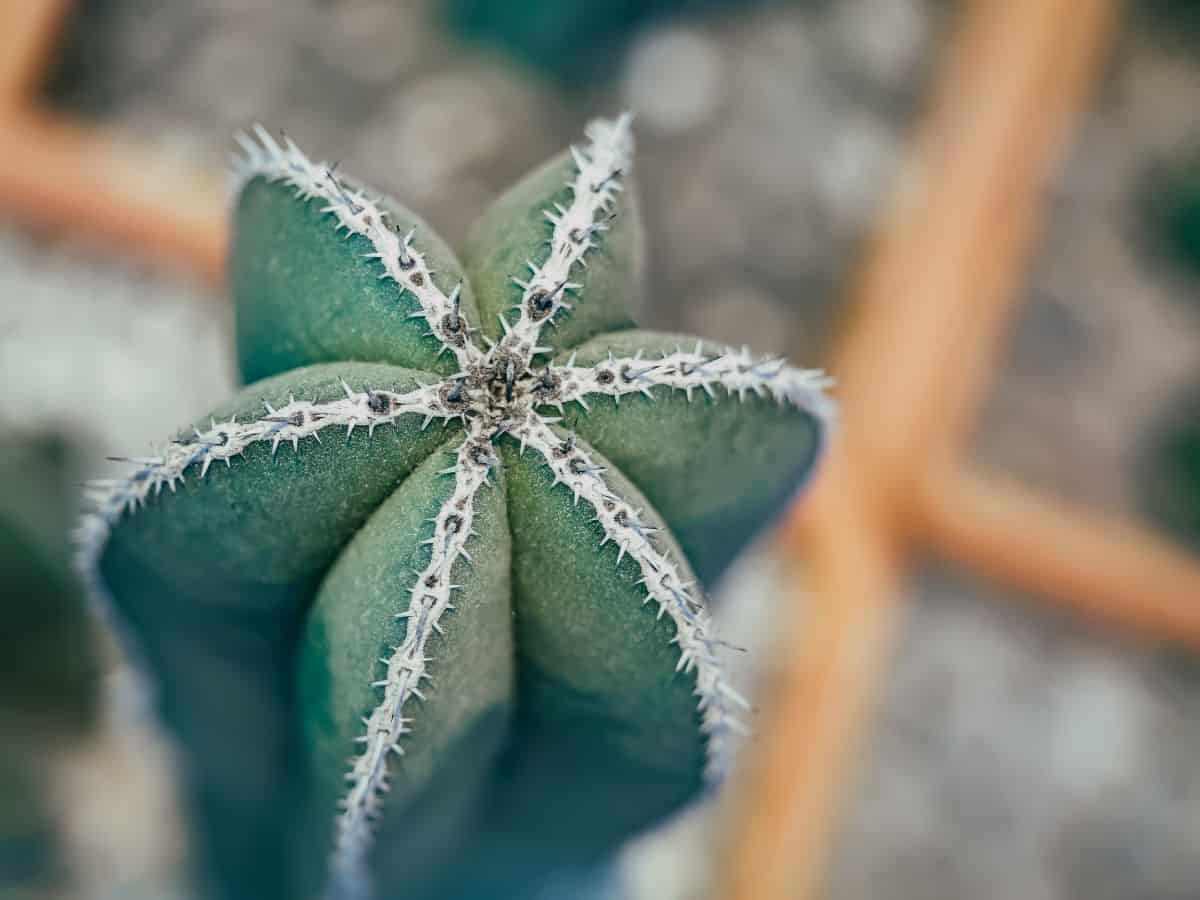
The Pachycereus Marginatus is easy to grow. It can be propagated in various ways. The most successful way of propagating it is either from cuttings or by seeds.
Propagating from a cutting
Propagating the Pachycereus Marginatus is most successful when done with a cutting. Always use a clean, sharp pair of gardening scissors or a clean knife with a very sharp blade. If the scissors or knife is dirty, the newly cut surface can absorb microorganisms that can potentially contaminate the plant and infect it. This will prevent the cutting from growing successfully.
Cut a piece of the Pachycereus Marginatus as close to the stem as possible. Allow it to dry out completely. After a few days, it should start to form a callus. This will help to ensure successful propagation. The cutting is more likely to take root if it has dried out fully and a callus has formed.
Once the cutting has dried for a few days, it can be planted in a pot of prepared soil with good drainage. As long as it has sufficient light and water, little shoots will start to emerge from the callused end of the cutting.
Water every few days at first, in order to encourage the cutting to take root. It will soon start to grow. Once the new plant is growing well, the watering frequency can be reduced and you can start to follow the watering guidelines given above.
Propagating from seeds
Propagating the Pachycereus Marginatus from seeds is possible, but it is not always successful. The seeds need to be well dried and then sown in a small container of soil that has good drainage. Once viable plants are growing, you will need to repot into bigger containers.
How to repot your Pachycereus Marginatus
Cultivating succulents is a very satisfying activity for keen gardeners. They are generally quite tough, and not much can hurt them. However, when they need to be repotted, it is crucial to do it correctly in order to preserve the plant. Repotting incorrectly or carelessly may harm the plant and cause irreparable damage.
When repotting, it is helpful to follow these guidelines:
- Knowing when to repot
Your cactus always needs to have enough room for the roots to spread. This will enable the plant to grow to its full potential. Under the right conditions, a Pachycereus Marginatus can grow quite rapidly.
Because it is a fast grower, the Pachycereus Marginatus may need to be repotted every two to three years.
Monitor your plant’s growth carefully, and keep a close eye on it. When the succulent looks like it may be getting too big for the pot, it is time to repot.
If the tips of the roots are becoming visible through the drainage holes at the bottom of the pot, the plant is outgrowing its container. It now needs more space and should be repotted in a bigger pot.
- How to protect your hands
The prickly spikes on the Pachycereus Marginatus can make it very difficult to handle the plant without hurting yourself. It is very painful and unpleasant to get the spikes stuck in your skin.
The best way to protect your hands is by wearing thick gardening gloves. If you do not have gloves, it is vital that you use something like a cloth or a piece of newspaper to protect your hands.
Loosely wrap the plant in a clean cloth or towel, or piece of newspaper. By pulling on the cloth, gently remove the plant from the pot.
- Placing the plant in the new container
- The new container should be one size bigger than the old one.
- Fill it halfway with the right soil mix, as described above.
- Gently place the base of the plant with the roots in the pot, at the same depth as it was in the original pot.
- Add more soil mix, filling to the top of the pot. Compact it gently with your hands.
- Do not water immediately. The plant will be traumatized from being handled and will need some time to settle.
- After a few hours, water lightly.
- The next day, give the plant a more thorough soaking.
Common pests and problems with the Pachycereus Marginatus
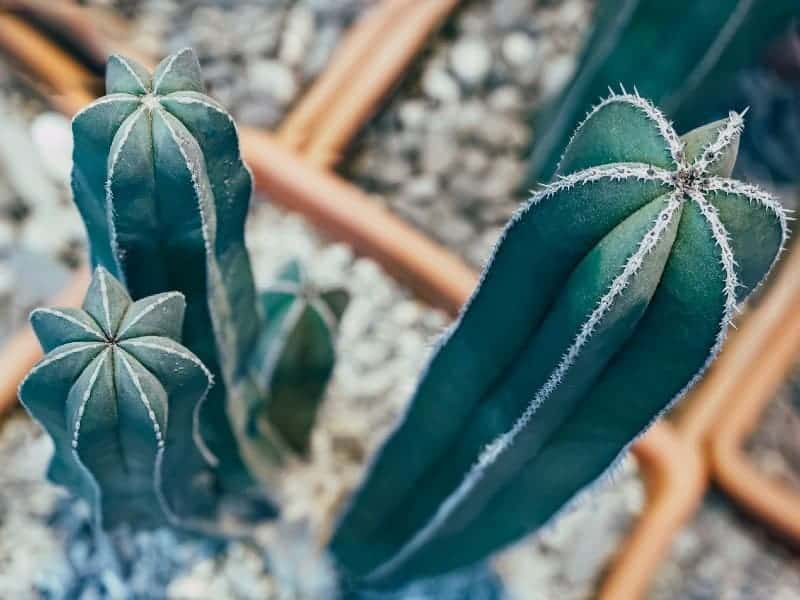
The two biggest problems that you may face when cultivating the Pachycereus Marginatus are overwatering, and insect infestation. Both of these are extremely harmful, and care must be taken to guard against them.
Overwatering
Root rot is the most common symptom of overwatering. If your Pachycereus Marginatus gets more water than it needs, the soil will be unable to dry sufficiently between waterings. If this happens, the roots will be left in soil that is constantly damp.
Sitting in permanently wet, or even slightly damp soil, will cause the roots to rot. They will become soft and mushy, and will not be able to support or nourish the plant. If the roots start rotting, the plant will not survive and it will eventually die.
This can be avoided by following the watering guidelines given earlier in this article.
Insect infestation
The most common pests that are found on the Pachycereus Marginatus are mealybugs and soft scales. Both of these pests are highly destructive and will kill your succulent if they are not eliminated completely.
Soft scales are very similar to aphids. As their name suggests, they have scales that enable them to suck the sap out of the plant. They are difficult to remove and are best treated with a good pesticide.
Mealybugs look like a whitish coating that covers the underside of the leaves. They will happily eat away at your plant if left unchecked. They can be eliminated effectively by spraying with a pesticide.
There are numerous types of pesticides available. You can choose between organic, natural pesticides, and those that are chemical-based. Your local garden center should have a range to choose from.


